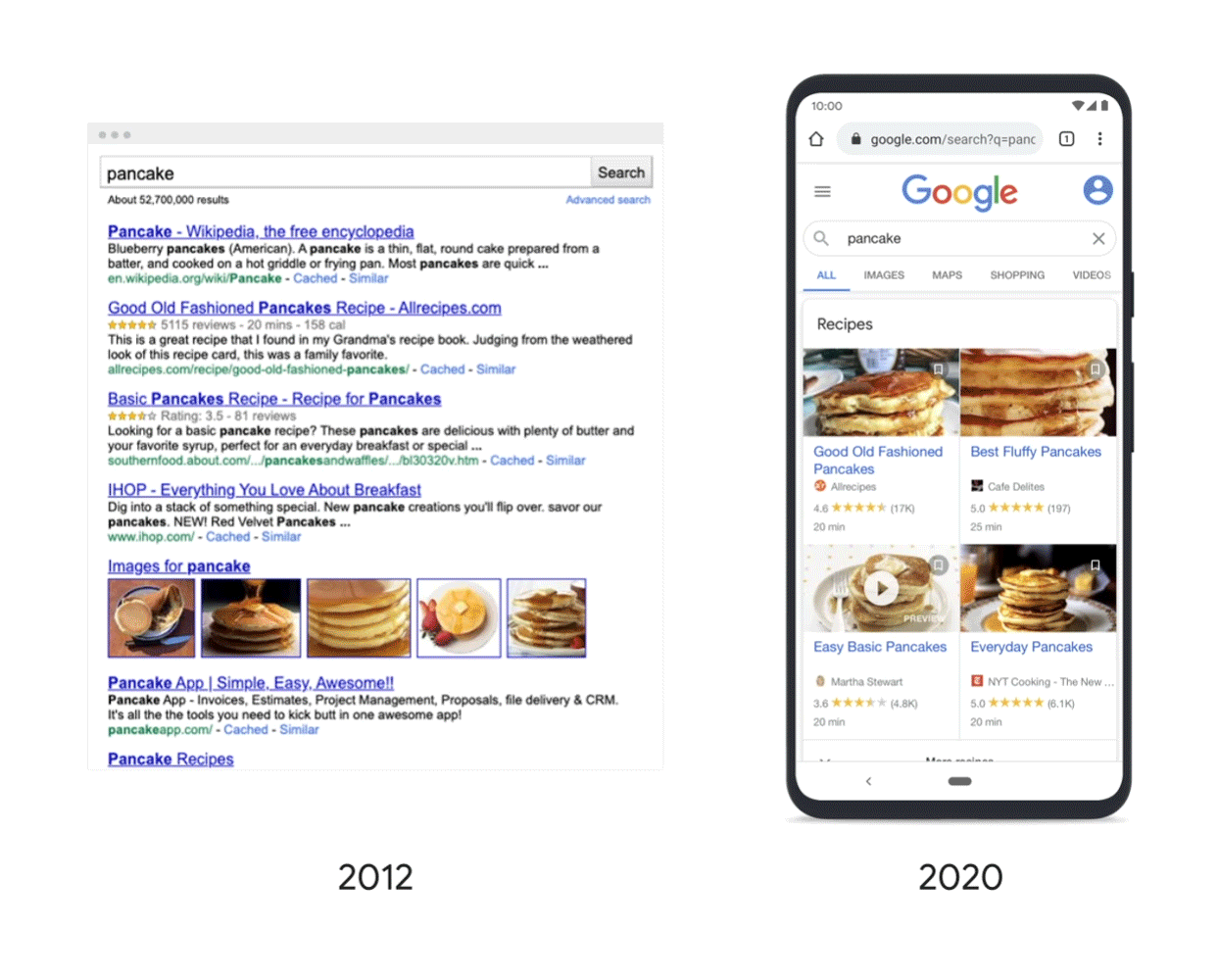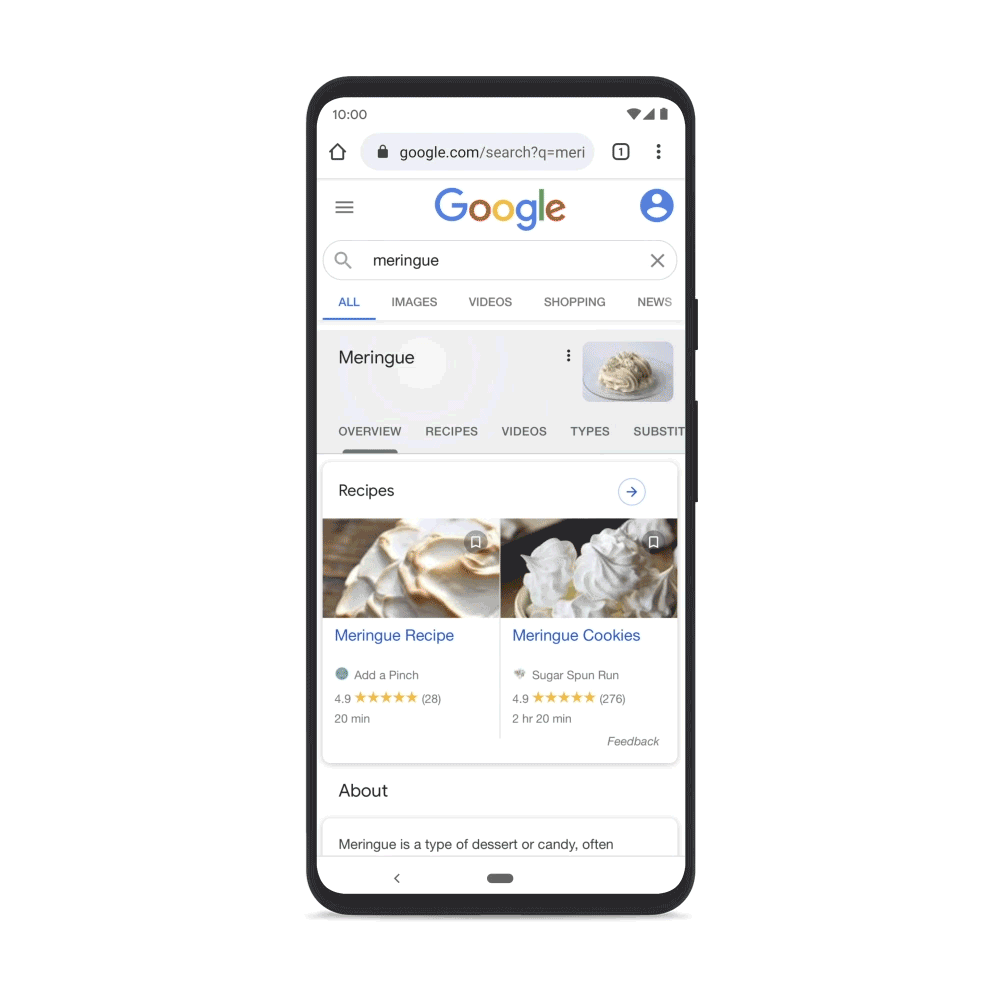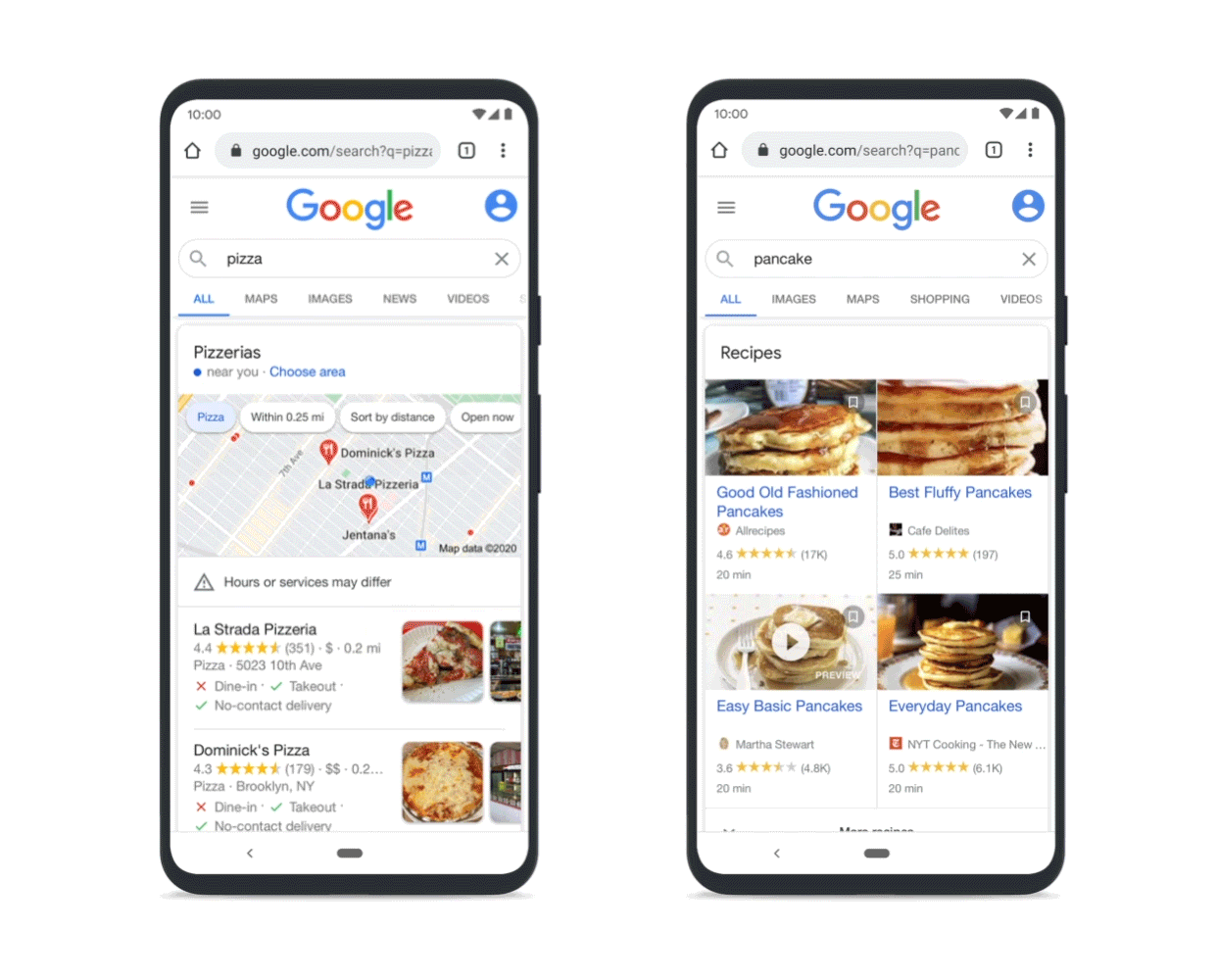When you come to Google and do a search, there might be billions of pages that are potential matches for your query, and millions of new pages being produced every minute. In the early days, we updated our search index once per month. Now, like other search engines Google, is constantly indexing new info to make accessible through Search.
But to make all of this information useful, it’s critical that we organize it in a way that helps people quickly find what they’re looking for. With this in mind, here’s a closer look at how we approach organizing information on Google Search.
Organizing information in rich and helpful features
Google indexes all types of information--from text and images in web pages, to real-world information, like whether a local store has a sweater you’re looking for in stock. To make this information useful to you, we organize it on the search results page in a way that makes it easy to scan and digest. When looking for jobs, you often want to see a list of specific roles. Whereas if you’re looking for a restaurant, seeing a map can help you easily find a spot nearby.
We offer a wide range of features--from video and news carousels, to results with rich imagery, to helpful labels like star reviews--to help you navigate the available information more seamlessly. These features include links to web pages, so you can easily click to a website to find more information. In fact, we’ve grown the average number of outbound links to websites on a search results page from only 10 (“10 blue links”) to now an average of 26 links on a mobile results page. As we’ve added more rich features to Google Search, people are more likely to find what they’re looking for, and websites have more opportunity to appear on the first page of search results.

When you searched for “pancake” in 2012, you mostly saw links to webpages. Now, you can easily find recipe links, videos, facts about pancakes, nutritional information, restaurants that serve pancakes, and more.
Presenting information in rich features, like an image carousel or a map, makes Google Search more helpful, both to people and to businesses. These features are designed so you can find the most relevant and useful information for your query. By improving our ability to deliver relevant results, we’ve seen that people are spending more time on the webpages they find through Search. The amount of time spent on websites following a click from Google Search has significantly grown year over year.
Helping you explore and navigate topics
Another important element of organizing information is helping you learn more about a topic. After all, most queries don’t just have a single answer--they’re often open-ended questions like “dessert ideas.”
Our user experience teams spend a lot of time focused on how we can make it easy and intuitive to refine your search as you go. This is why we’ve introduced features like carousels, where you can easily swipe your phone screen to get more results. For instance, if you search for “meringue”, you might see a list of related topics along with related questions that other people have asked to help you on your journey.

How features and results are ranked
Organizing information into easy-to-use formats is just one piece of the puzzle. To make all of this information truly useful, we also must order, or “rank,” results in a way that ensures the most helpful and reliable information rises to the top.
Our ranking systems consider a number of factors--from what words appear on the page, to how fresh the content is--to determine what results are most relevant and helpful for a given query. Underpinning these systems is a deep understanding of information--from language and visual content to context like time and place--that allows us to match the intent of your query with the most relevant, highest quality results available.
In cases where there’s a single answer, like “When was the first Academy Awards?,” directly providing that answer is the most helpful result, so it will appear at the top of the page. But sometimes queries can have many interpretations. Take a query like “pizza”--you might be looking for restaurants nearby, delivery options, pizza recipes, and more. Our systems aim to compose a page that is likely to have what you’re looking for, ranking results for the most likely intents at the top of the page. Ranking a pizza recipe first would certainly be relevant, but our systems have learned that people searching for “pizza” are more likely to be looking for restaurants, so we’re likely to show a map with local restaurants first. Contrast that to a query like “pancake” where we find that people are more likely looking for recipes, so recipes often rank higher, and a map with restaurants serving pancakes may appear lower on the page.

An important thing to remember is that ranking is dynamic. New things are always happening in the world, so the available information and the meaning of queries can change day-by-day. This summer, searches for “why is the sky orange” turned from a general question about sunsets to a specific, locally relevant query about weather conditions on the West Coast of the U.S. due to wildfires. We constantly evaluate the quality of our results to ensure that even as queries or content changes, we’re still providing helpful information. More than 10,000 search quality raters around the world help us conduct hundreds of thousands of tests every year, and it’s through this process that we know that our investments in Google Search truly benefit people.
We’ve heard people ask if we design our search ranking systems to benefit advertisers, and we want to be clear: that is absolutely not the case. We never provide special treatment to advertisers in how our search algorithms rank their websites, and nobody can pay us to do so.
Ongoing investment in a high quality experience
As we’ve seen for many years, and as was particularly apparent in the wake of COVID, information needs can change rapidly. As the world changes, we are always looking for new ways we can make Google Search better and help people improve their lives through access to information.
Every year, we make thousands of improvements to Google Search, all of which we test to ensure they’re truly making the experience more intuitive, modern, delightful, helpful and all-around better for the billions of queries we get every day. Search will never be a solved problem, but we’re committed to continuing to innovate to make Google better for you.